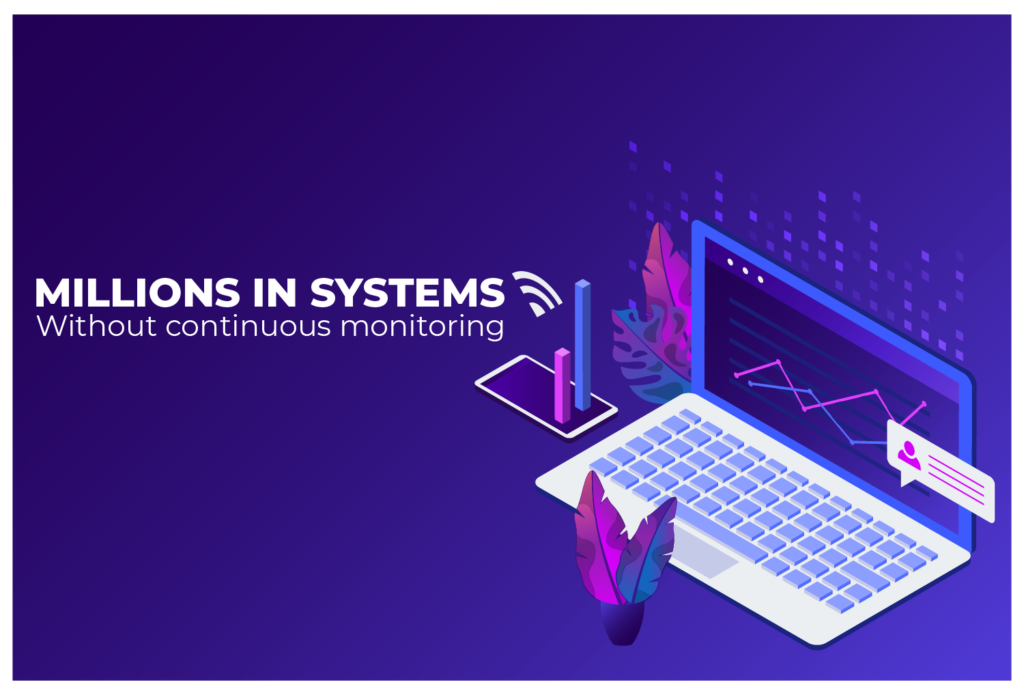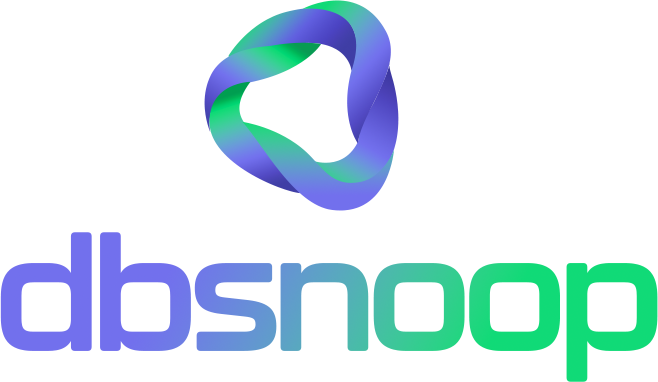

The question is not rhetorical; it is a robustness test for the strategy of any modern business. Would you entrust the management of millions of dollars in financial assets to a system without continuous auditing, without surveillance, and without fraud prevention mechanisms? The answer is a resounding “no.” Yet, every day, companies entrust the digital equivalent of this: database systems that process millions in transactions, guard intellectual property, and maintain the trust of thousands of customers, to a form of “blind monitoring.”
This monitoring, based on reactive dashboards and threshold alerts, is the equivalent of installing a smoke detector and calling it a “fire prevention system.” It doesn’t prevent; it just announces the disaster that has already begun. In a digital ecosystem where millisecond latency impacts conversion rates and availability is synonymous with revenue, this reactive approach is no longer a technical risk. It is a financial irresponsibility. The real question that technology and business leaders need to ask themselves is: are we truly protecting our most valuable assets, or are we just waiting to be notified of the next loss?
Redefining the “Assets of Millions” in the Digital Economy
When we talk about “millions,” it is crucial to understand that we are not referring to the cost of hardware or software licenses. We are talking about the value that flows through your data systems every minute.
The Transactional Asset: For an e-commerce site, this is the database that processes payments. For a fintech, it’s the system that manages financial transactions. The health of this asset is directly proportional to revenue. Uptime is revenue. Latency is cart abandonment.
The Customer Data Asset: Your CRM, your Data Warehouse, your electronic health record system. This asset contains the most precious commodity of the digital age: customer data. A security failure here doesn’t result in downtime, but in something much worse: loss of trust, massive GDPR fines, and reputational damage that can take years to repair.
The Operational Asset: Your ERP and SCM (Supply Chain Management) systems. They don’t generate revenue directly, but their unavailability paralyzes the company’s ability to operate. If the WMS (Warehouse Management System) goes down, the distribution center stops. If the ERP fails, accounting and billing freeze.
These are not supporting IT systems. They are the central engines of the business. And traditional monitoring treats them with a dangerous superficiality.
The Real Risk of Blind Monitoring and the Illusion of Green Dashboards
The biggest flaw of traditional monitoring is that it was designed for a simpler world. It measures isolated symptoms and presumes that a system without red alerts is a healthy system. This is a dangerous illusion.
Technical Debt as an Unaccounted Financial Risk
In the financial world, a small debt with compound interest can lead to bankruptcy. In the data world, “technical debt” operates in the same way. An application query that was efficient when the user table had 100,000 records begins to subtly degrade when the table reaches 10 million. This degradation is silent. It doesn’t trigger a CPU alert. It simply adds 5ms of latency to each execution. Multiply that by thousands of executions per minute, and you have a performance “interest” being paid every second, resulting in a slower customer experience and higher cloud costs.
Traditional monitoring doesn’t see this debt accumulating until it “breaks the bank”—a cascading performance incident.
The Myopia of the Threshold Alert
A “disk space > 85%” alert is a perfect example. It informs you of the problem when it is already in an advanced state. It provides no context:
- Which process is consuming the space? Is it legitimate data growth, a runaway log file, or a temporary backup that wasn’t cleaned up?
- What is the growth rate? Do we have 24 hours or 24 minutes to act before the disk hits 100% and causes a total outage?
- What is the business impact? Is it the disk of a development environment or the transaction log disk of the production database, whose failure will paralyze all operations?
This lack of intelligence and context turns every alert into a manual, reactive, and stressful investigation.

The Answer: Predictive System Observability with dbsnOOp’s Autonomous DBA
Entrusting millions to a system requires a vigilance that is as intelligent and sophisticated as the assets it protects. dbsnOOp was built on this principle, offering an observability platform that replaces blind monitoring with predictive and continuous intelligence. It is the audit and prevention system that your digital assets demand.
Visibility is the Foundation of Trust: The 360-Degree View
You cannot protect what you cannot see. The first layer of protection is dbsnOOp’s 360-Degree View. The platform integrates and correlates metrics from all layers of your stack, from the infrastructure (CPU, disk, network) to the depths of the database (sessions, locks, execution plans) and the application (queries, users). This breaks down the silos that define traditional monitoring and ends the blame game between teams. Complete visibility is the foundation upon which trust and governance are built.
From Reactive to Predictive: The Power of AI to Learn “Normal”
The heart of prevention is the ability to detect anomalies before they become incidents. The Autonomous DBA from dbsnOOp uses machine learning to build a dynamic, high-fidelity baseline of your system’s “heartbeat.”
- Continuous Learning: The AI learns the workload patterns for every hour of the day, every day of the week. It understands that the peak access of your e-commerce site at 8 p.m. is normal, but that the same workload at 3 a.m. would be a serious anomaly, possibly indicating a denial-of-service (DDoS) attack at the application layer.
- Detection of Silent Degradation: It is this capability that allows the platform to identify “technical debt” accumulating. The AI detects the gradual 2ms increase in the latency of a critical query and flags it as a risk trend, weeks before it has a noticeable impact on the user.
Root Cause Diagnosis as Financial Risk Mitigation
When a predictive anomaly is identified, the value of dbsnOOp becomes crystal clear. The platform doesn’t send an cryptic alert; it delivers a complete diagnostic dossier, using its Top-Down Diagnosis functionality.
- Drastic Reduction in MTTR: The AI correlates the symptom (e.g., application slowness) with its root cause (e.g., lock contention in the database) in seconds. This reduces the Mean Time to Resolution (MTTR) from hours to minutes. In a system that bills thousands per minute, this acceleration in diagnosis has an immediate and measurable ROI (Return on Investment).
- Execution Plan Analysis: The diagnosis goes to the deepest level. The AI analyzes the execution plan of the offending query and identifies the inefficiency. The team doesn’t receive a problem; they receive an answer.
AI-Powered Tuning: Actively Optimizing the Financial Asset
dbsnOOp goes beyond failure prevention and enters the realm of value optimization. The AI-Powered Tuning functionality transforms observability into an ROI-generating tool.
- Performance and Conversion Optimization: By analyzing and suggesting improvements for the slowest queries, the platform helps to directly improve the user experience. In e-commerce, a page that loads 100ms faster can mean a real increase in the conversion rate.
- Cloud Cost Optimization: Inefficient queries are expensive. They consume more CPU, more I/O, and more memory, which translates into higher cloud bills. By optimizing these queries, dbsnOOp helps to reduce resource consumption and, consequently, operational costs (OpEx), optimizing the TCO (Total Cost of Ownership) of your infrastructure.
The Business Case for Continuous Surveillance: An Investment, Not a Cost
The initial question, “Would you trust millions to systems without continuous monitoring?”, implies a choice. Company A chooses traditional monitoring, treating it as a mandatory IT cost. Company B chooses predictive observability, treating it as an investment in revenue protection and innovation enablement.
When a performance degradation incident occurs, Company A spends 4 hours in a war room, loses tens of thousands in revenue, frustrates its customers, and burns out its technical team. Company B, on the other hand, was alerted by dbsnOOp about the degradation trend two weeks earlier, its team applied the recommended index optimization during a planned maintenance window, and the incident never happened.
In the end, the decision not to invest in predictive surveillance is, in itself, a high-stakes bet. It’s betting that the next incident won’t be catastrophic, that your team will be able to react in time, and that your customers will be patient. In the world of high-value digital business, this is a bet that few companies can afford to lose.
Want to solve this challenge intelligently? Schedule a meeting with our specialist or watch a live demo!
Schedule a demo here.
Learn more about dbsnOOp!
Learn about database monitoring with advanced tools here.
Visit our YouTube channel to learn about the platform and watch tutorials.

Recommended Reading
- Database Automation: How to Unlock Growth and Innovation in Your Company: Protecting an asset of millions requires more than manual surveillance. This article details how intelligent automation, the core of the Autonomous DBA, is the only scalable way to ensure the health and resilience of complex databases, freeing the human team to focus on innovation that generates more value.
- Text-to-SQL in Practice: How dbsnOOp Democratizes the Operation of Complex Databases: Part of protecting a high-value system is controlling how it is accessed. This post explores how Text-to-SQL technology can mitigate the risk of poorly formulated ad-hoc queries, a common source of performance incidents, ensuring that data access is both secure and efficient.
- How dbsnOOp Frees Your Team for What Really Matters: Let the AI Work: A company’s greatest asset is its team. This article focuses on the human ROI of predictive observability. By eliminating “firefighting,” dbsnOOp allows your most expensive experts to dedicate themselves to strategic projects, protecting not only the revenue but also the company’s intellectual capital.

